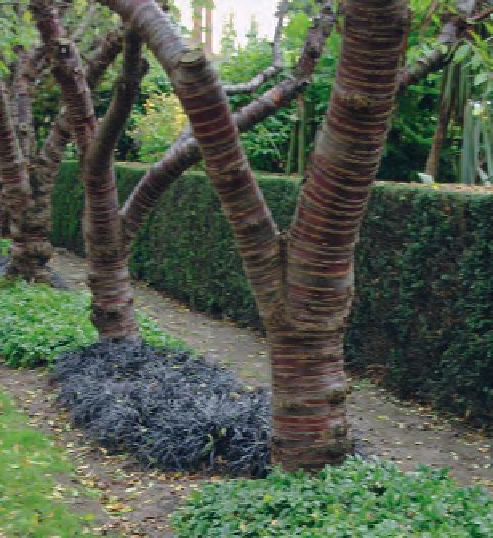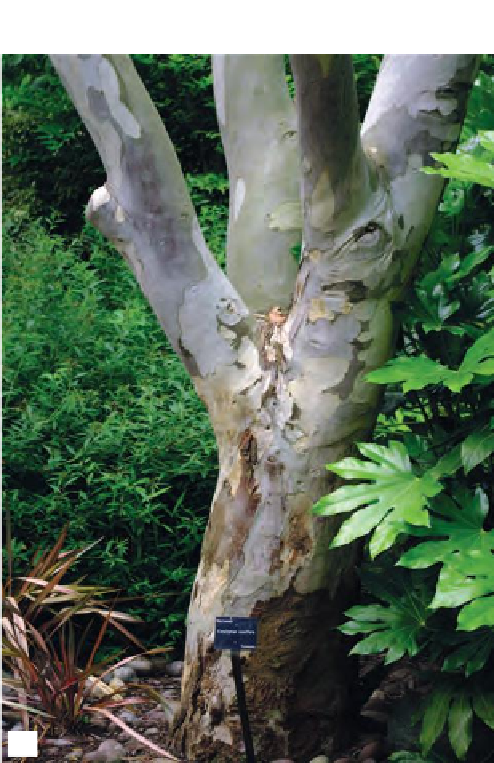Agriculture Reference
In-Depth Information
(a)
(b)
Figure 7.8
Trees with ornamental bark: (a)
Acer
pensylvanicum
'Erythrocladum'; (b)
Prunus serrula
var.
tibetica
; (c)
Eucalyptus coccifera
mas
(male fern). Leaf texture is also important.
Most species have quite smooth-textured leaves
but
Verbascum olympicum
,
Stachys byzantina
(lamb's tongue) and the alpine
Leontopodium
alpinum
(edelweiss) all have woolly textures.
In contrast
Ilex aquifolium
(holly) and
Pieris
japonica
have striking glossy leaves.
A wide variety of leaf colour tones are
available to the gardener. The conifer
Juniperus chinensis
(Chinese juniper), shrubs
of the
Ceanothus
genus and
Helleborus niger
(Christmas rose) are examples of dark-leaved
plants. Plants with light-coloured leaves include
the tree
Robinia pseudoacacia
'Frisia' (false
acacia), the climber
Humulus lupulus
'Aureus'
(golden hop) and the creeping herbaceous
perennial
Lysimachia nummularia
'Aurea'
(creeping jenny). Plants with unusually
coloured foliage include the small tree
Prunus
'Shirofugen' (bronze-red), the subshrub
Senecio maritima
(silver-grey) and the shade
perennial
Ajuga reptans
'Atropurpurea'
(bronze-purple). In autumn, the leaves of
several tree, shrub and climber species change
from green to a striking orange-red colour.
Acer japonicum
(Japanese maple),
Euonymus
alatus
(winged spindle), and
Parthenocissus
tricuspidata
(Boston ivy) are examples.
(c)
Variegation gives a novel appearance to the
plant.
Aucuba japonica
(laurel),
Euonymus
fortunei
and
Hedera helix
(ivy) all have good
variegated forms.





